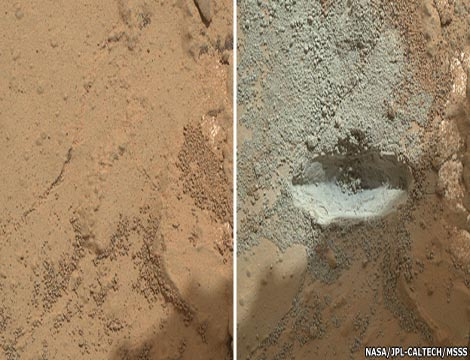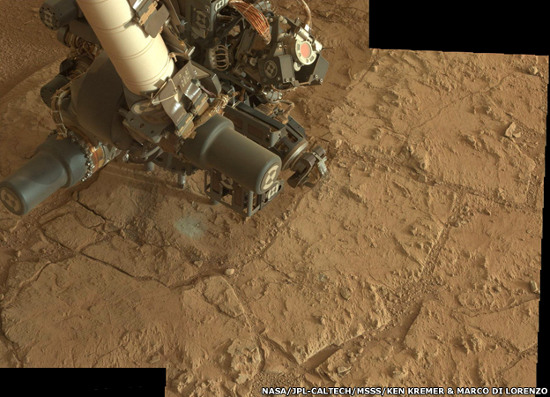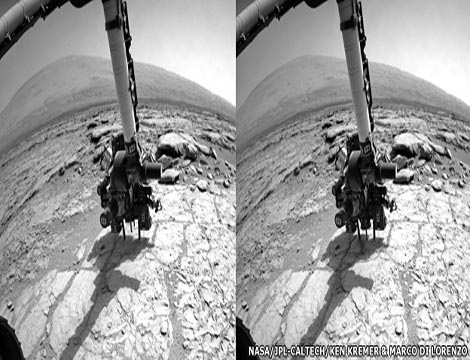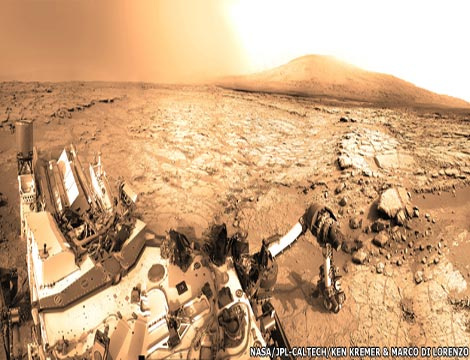NASA robots search for 'treasure' on Mars
Curiosity is the first robot capable of drilling deep into Mars's rock. This time, Curiosity uses its drilling and beating system to drill, smash into rocks, take samples and take them to Curiosity's direct research lab, to find out if Mars once had a suitable habitat. for bacteria?
>>>Curiosity prepares to drill the first nose on Mars
Structural analysis plays an important role because stone samples can tell us more about geochemical characteristics when they are formed.
The deep rock form inside gives us a different look than the surface rock pattern - which is subject to many environmental impacts or the destruction of radiation.
Curiosity landed on Mars on July 6, 2012. Since then, it has studied in areas where satellite images define the intersection of three different strata. With the evidence gathered, scientists said that Mars could have been a very fast flowing water.

Stone surface before and after Curiosity drilling.

The robot's arm and the tool for drilling on John's stone range
Klein (named after an engineer involved in making Curiosity).

Images from Curiosity's front camera.

View of the Golden Gulf bay when Curiosity drills.
- NASA developed the Valkyrie robot to build a human base on Mars
- Top 10 photos of Mars
- Search for the most mysterious treasures of all time
- Robot explorer Mars moves worm-type
- NASA is about to launch new Mars explorer robots: Find alien life
- NASA's Maven spacecraft approached Mars
- NASA 'marries' robots with people on the journey to Mars
- NASA robots are banned from water on Mars
- The NASA ship found robots landing on Mars
- Mars exploration robots will land harassment
- NASA is about to launch a ship to study the Martian atmosphere
- Treasure map worth billions of dollars by NASA astronaut
 Van Allen's belt and evidence that the Apollo 11 mission to the Moon was myth
Van Allen's belt and evidence that the Apollo 11 mission to the Moon was myth The levels of civilization in the universe (Kardashev scale)
The levels of civilization in the universe (Kardashev scale) Today Mars, the sun and the Earth are aligned
Today Mars, the sun and the Earth are aligned The Amazon owner announced a secret plan to build a space base for thousands of people
The Amazon owner announced a secret plan to build a space base for thousands of people